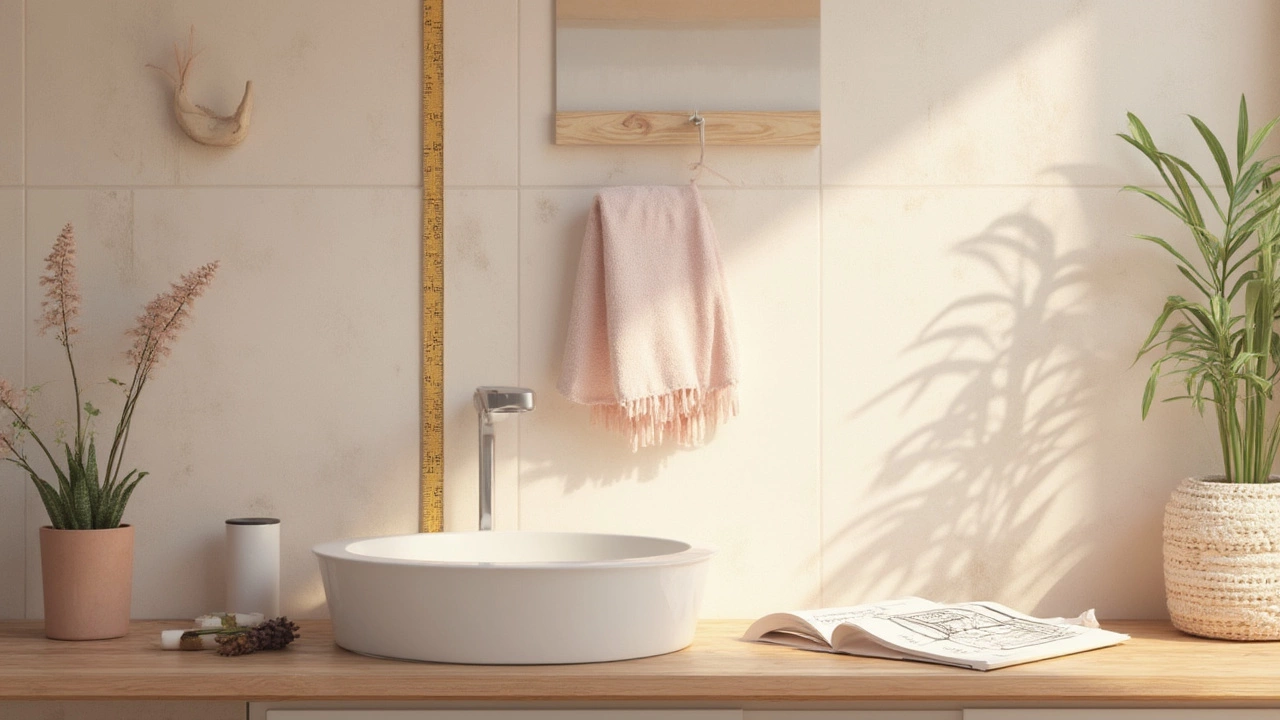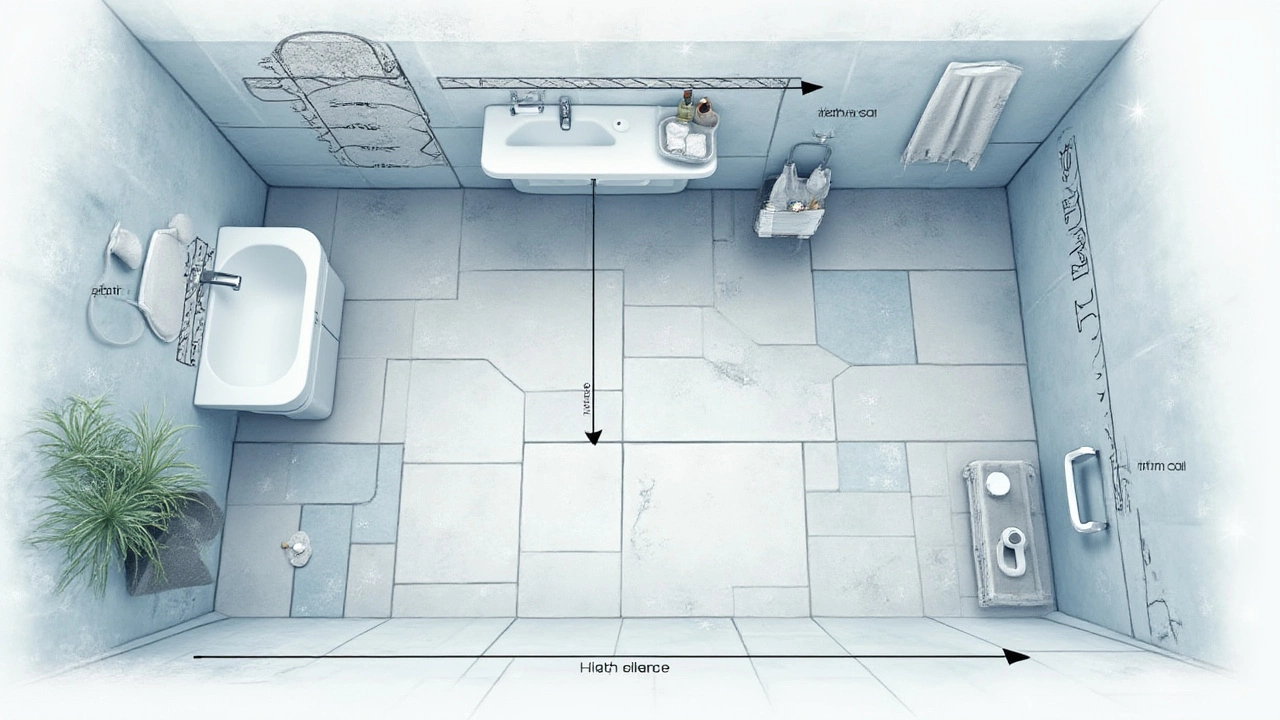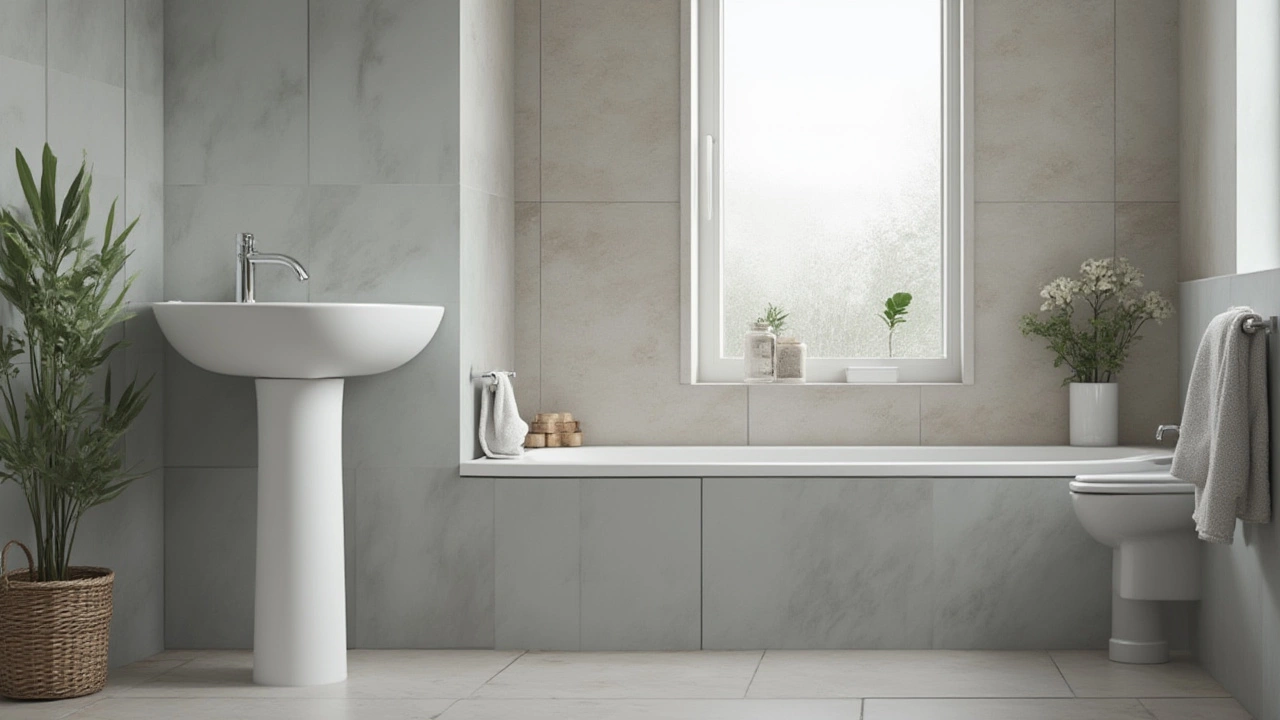Ever wiped your hands in a bathroom and reached blindly for a towel, only to find the towel ring is way too far—or annoyingly close? It’s a little design detail, but, wow, does it impact your daily routine. When you install a towel ring at the right height and distance from your sink, it’s almost invisible—it just works. Set it wrong and you’ll notice, every single time you dry your hands. Let’s dig into where that sweet spot is and why it matters more than you think.
Why Towel Ring Placement Makes a Surprising Difference
Your morning is rushed, toothpaste on your chin, water dripping from your hands, and—hang on, where’s the towel? Having to shuffle around for a towel is, honestly, a little thing that adds up to big annoyance over time. When towel rings are placed thoughtfully, the whole bathroom routine just flows. There’s more to it than just convenience, though. Proper towel placement keeps your walls dry, helps fight mold, and even protects your drywall or tile from those little water blotches that build up over time.
There’s also something people rarely talk about: style. A misplaced towel ring can visually knock your bathroom off-balance. Designers talk about the "visual triangle"—the idea that your sink, mirror, and towel ring form a useful (and pretty) trio. Nail the placement, and everything just clicks. But most people don’t think about this until they're already frustrated with ugly holes in the wall.
Hand-washing went up a notch after 2020. People became obsessed with hygiene, and bathrooms now play a starring role in perception—guests, buyers, even you size up a bathroom from small details like towel ring position. It’s subtle, but studies by the National Kitchen and Bath Association (NKBA) found that thoughtful fixture placement makes people rate the whole space as cleaner and more inviting.
It’s not about upending your design or spending extra cash. Think of proper placement as self-care and a little nod to everyone using your bathroom—including future-you.
The Magic Number: How Far Should a Towel Ring Be from the Sink?
People argue over exact measurements, but after hundreds of bathrooms and studies from major home design groups, there’s a real answer. The consensus lands on this: towel ring placement should be about 20 to 22 inches above the vanity countertop and roughly 8 to 12 inches from the edge of the sink. Notice it’s a range, not a rule carved in granite—because, let’s face it, every bathroom is a little different.
If you’re right-handed, putting the towel ring within easy reach of your dominant hand (usually to the right of the sink) just feels natural. For kids’ bathrooms or powder rooms, try the lower end of the range so little arms can reach. Have double sinks? Two towel rings work far better than one in the middle and keep the peace during morning rushes.
Why not put it closer? If you crowd the towel ring right next to the sink, your towels inevitably dangle into the bowl or over the faucet—a recipe for soggy cloth and water puddles. Too far away, and you’re sending water droplets flying all over the floor. That magic 8 to 12-inch sweet spot lets you grab the towel in one easy move without stretching or making a mess.
Remember, measuring from the center of the towel ring—not the base or the top—gives the most accurate result. This accounts for different ring sizes and towel lengths. If in doubt, tape up a piece of cardboard at different positions and do a real-time test-run with a towel before breaking out the drill.

Common Placement Mistakes (And How to Avoid Them)
One of the top mistakes? Rushing it. People eyeball the spot or guess at what looks "about right." Next thing you know, that brand-new towel ring is either too high (forcing you to do a fingertip stretch every time) or too low (so now your towel drags on the wet vanity surface). You’ve seen this in hotels and hurried rental units.
Another misstep: letting style trump function. Those Pinterest-perfect shots sometimes show towel rings perched symmetrically under sconces or smack in the geometric center between mirrors. Sure, it’s photogenic, but when you try to use it? Annoying. Always put your daily use ahead of what looks fancy on Instagram.
Skipping planning for repairs is also a mistake. If your house has old tile, you should double-check that your chosen spot isn’t on a grout line or hiding unexpected plumbing. Some folks discover this the hard way and have to fill holes or patch tile, which almost never matches perfectly.
Finally, one sneaky problem that pops up: not thinking about the towel size. Large, fluffy towels need more clearance than thin guest towels. Always check how your actual towel sits—let it hang and make sure it won’t brush up against an electrical switch, the vanity, or that beautiful new tile.
Different Bathroom Setups and When to Break the 'Rules'
Small bathrooms throw a curveball. In tiny powder rooms, every inch is precious. Sometimes you just don’t have 8 to 12 inches between the sink and wall—what then? Go for the smallest practical distance that keeps the towel accessible, even if it’s closer to 6 inches. Corner sinks, vessel sinks, or pedestal sinks might need the towel ring on an adjacent wall or even mounted on the side of a cabinet.
For shared spaces, like jack-and-jill bathrooms, consider two towel rings (one for each person’s side). If you’re dealing with kids or people with limited mobility, dropping the towel ring height by a few inches really improves independence and usability. Bathrooms with floating vanities give a modern look, but keep towel rings at the standard counter height—not floating with the vanity height, which is often too low.
What about alternative placements? Some folks swap the towel ring for a towel bar when there’s more space. Bars are great, but require 18 to 24 inches of width and typically go at the same 48-inch height from the floor that’s recommended for most rings. In tight spots, hooks are tempting for their flexibility, but they don’t allow the towel to dry as neatly. When humidity is high (like in a main bathroom with daily showers), this matters: a wet, bunched-up towel is a bacteria magnet.
An underrated tip: when walls are scarce, look to the side of a vanity or a freestanding cabinet. Adhesive or over-the-door towel rings can save the day in apartments or rentals—no need for screws, and no losing your security deposit over a misplaced hole.

Installation Tips and Little Tricks for a Flawless Look
Measuring twice sounds boring, but trust me, your future self will thank you. Mark with painter’s tape and stand back before you commit to drilling. Use a level—crooked towel rings bug people more than you might think. And if your ring is a swinging style, make sure it swings freely without hitting the wall or vanity.
When fastening into drywall, always use wall anchors. Towel rings get tugged on every day, and nothing’s sadder than feeling the hardware get wobbly after just a few weeks. If you’re working with tile, invest in a diamond-tipped drill bit and keep the speed slow. Protect the tile face by putting masking tape over the drill spot—it helps keep the bit from wandering.
Don’t skip thinking about accessories. Towel rings come in every finish these days: brushed brass, matte black, classic chrome, you name it. Matching your towel ring to your faucet or cabinet pulls is an easy way to pull your bathroom together. If you’re doing a quick refresh, sometimes just swapping out tired old towel holders brings the whole space up to date.
Maintenance matters more than you’d expect. Wipe down around the towel ring regularly. Drips and soap splatter can stain wall paint or grout lines if left for weeks. Good ventilation helps towels dry out, which cuts down on dank smells and mustiness—even from a simple washcloth.
One final tip that design pros swear by: use full-sized towels for the first placement test. Small guest towels can fool you into placing the ring too low or close, so always try with your actual everyday towel.
- Always measure from the center of the towel ring
- Account for towel length, not just hardware size
- Stay within 8-12 inches from the sink edge
- Go a bit lower for kids’ bathrooms
- Choose finishes that complement your fixtures
- Use proper anchors for drywall or tile
- Test placement with a folded towel before drilling
Nailing this tiny detail can kick-start a chain reaction of good vibes in your bathroom. Even if guests don’t notice consciously, it just feels right—like the room was thoughtfully planned. And after all, isn’t that the goal of every great home project?


